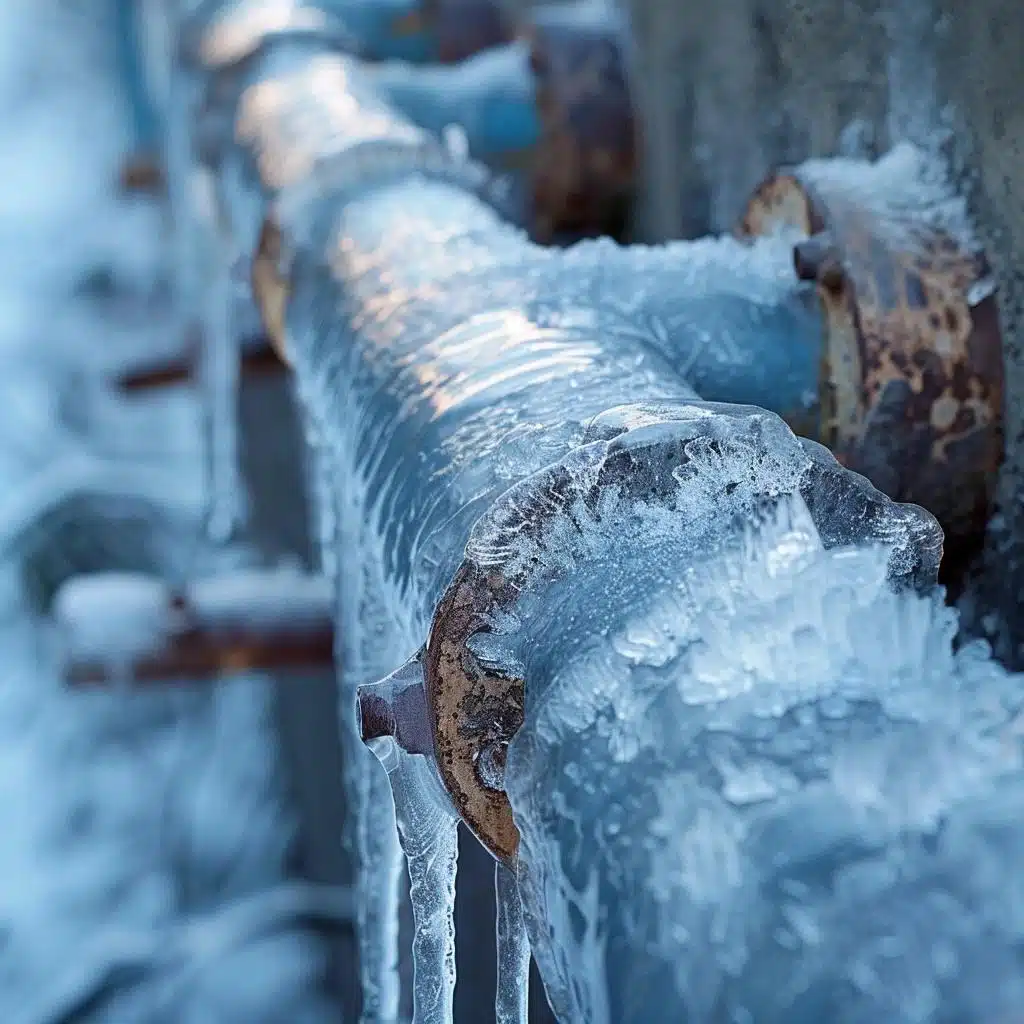Tips to Maintain Your Pipes from Freezing Issues: Crucial Advice
Tips to Maintain Your Pipes from Freezing Issues: Crucial Advice
Blog Article
The article following next relating to Preventing and dealing with frozen pipes is especially informative. You should keep reading.

Cold weather can ruin your plumbing, especially by freezing pipelines. Below's how to avoid it from happening and what to do if it does.
Introduction
As temperature levels drop, the danger of icy pipes boosts, possibly leading to expensive repair services and water damages. Understanding how to prevent frozen pipes is important for house owners in chilly environments.
Prevention Tips
Protecting at risk pipes
Cover pipelines in insulation sleeves or utilize heat tape to safeguard them from freezing temperature levels. Focus on pipes in unheated or external locations of the home.
Home heating strategies
Maintain interior spaces adequately heated up, specifically locations with pipes. Open closet doors to permit warm air to circulate around pipelines under sinks.
Exactly how to identify frozen pipelines
Seek reduced water flow from faucets, unusual smells or noises from pipelines, and visible frost on revealed pipes.
Long-Term Solutions
Architectural modifications
Consider rerouting pipes far from exterior wall surfaces or unheated locations. Add added insulation to attics, basements, and crawl spaces.
Updating insulation
Invest in top quality insulation for pipelines, attics, and walls. Proper insulation helps maintain constant temperature levels and lowers the threat of icy pipelines.
Shielding Outdoor Pipes
Yard hose pipes and exterior taps
Separate and drain garden pipes prior to winter months. Mount frost-proof spigots or cover outdoor faucets with insulated caps.
Comprehending Frozen Pipes
What causes pipes to freeze?
Pipes freeze when subjected to temperature levels below 32 ° F (0 ° C) for expanded durations. As water inside the pipelines freezes, it expands, putting pressure on the pipeline wall surfaces and potentially triggering them to break.
Dangers and damages
Icy pipes can lead to supply of water interruptions, residential property damage, and costly fixings. Burst pipelines can flooding homes and trigger comprehensive architectural damages.
Signs of Frozen Water Lines
Identifying frozen pipes early can prevent them from bursting.
What to Do If Your Pipes Freeze
Immediate activities to take
If you suspect frozen pipelines, maintain taps open to ease stress as the ice thaws. Use a hairdryer or towels taken in warm water to thaw pipelines slowly.
Conclusion
Stopping frozen pipes calls for positive measures and fast reactions. By recognizing the reasons, indicators, and preventive measures, homeowners can secure their pipes during cold weather.
6 Proven Ways to Prevent Frozen Pipes and Protect Your Home
Disconnect and Drain Garden Hoses
Before winter arrives, start by disconnecting your garden hoses and draining any remaining water. Close the shut-off valves that supply outdoor hose bibs and leave the outdoor faucet open to allow any residual water to drain. For extra protection, consider using faucet covers throughout the colder months. It’s also important to drain water from any sprinkler supply lines following the manufacturer’s directions.
Insulate Exposed Pipes
Insulating your pipes is an effective way to prevent freezing. Pipe insulation is readily available at home improvement stores and is relatively inexpensive. Pay close attention to pipes in unheated areas such as the attic, basement, crawl spaces, or garage. Apply foam insulation generously to create a buffer against the cold. You can also wrap your pipes in heat tape or thermostat-controlled heat cables for added warmth.
Seal Air Leaks
Inspect your home for any cracks or openings that could let in cold air. Seal any holes around the piping in interior or exterior walls, as well as the sill plates where your home rests on its foundation. Additionally, make sure to keep your garage door closed unless you’re entering or exiting. Leaving it open creates a significant air leak that can lead to frozen pipes.
Allow Warm Air Circulation
During cold snaps, it’s essential to allow warm air to circulate evenly throughout your home. Leave interior doors ajar to promote better airflow. Open kitchen and bathroom cabinets to help distribute heat consistently around the rooms. If you have small children or pets, be sure to remove any household chemicals or potentially harmful cleaners from open cabinets for safety.
Let Faucets Drip
A small trickle of water can make a big difference in preventing ice formation inside your pipes. When temperatures drop significantly, start a drip of water from all faucets served by exposed pipes. This continuous flow helps prevent the water from freezing. Additionally, running a few faucets slightly can relieve pressure inside the pipes, reducing the chances of a rupture if the water inside does freeze.
https://choateshvac.com/6-proven-ways-to-prevent-frozen-pipes-and-protect-your-home/

Do you really like reading about Helpful Tips to Prevent Frozen Pipes this Winter? Write feedback below. We will be delighted to find out your ideas about this article. We hope to see you back again before long. Do you know somebody who is interested by How to Prevent Your Pipes From Freezing? Feel free to promote it. Thanks a lot for being here. Don't forget to come by our website back soon.
Book With Us Today! Report this page